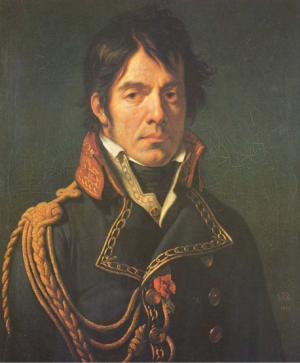I’m finding lots of interesting use of explosives by both sides in the Peninsula War (1807 – 1814) particularly the French who clearly had developed extensive capabilities with explosives. These engineering capabilities and the use of explosives in both attack and defence were, I think, largely developed about a hundred and fifty years earlier by Vauban, the famous French military engineer. I should write about him more in the future, but his writing and ideas were used extensively by the French through the latter part of the the 17th century, through the entire 18th and on well into the 19th – I certainly see his influence in French actions in the Crimean war in the 1850s, some 200 wars after the start of Vauban’s career. But this post is about a command-pull IED.
But this particular device in this post is attributed to the Portuguese who fought as allies of the British. It’s also an interesting “Assault EOD operation” by the French, based on careful observation, planning and intelligence. Alas I have no imagery but nonetheless a good description provided by a famous French engineer, Captain Pierre Bouchard. In May of 1809, the Portuguese were defending a key crossing, a bridge over the Tampa river near Amarante. This was, in military terms, a “reserve demolition“. The Portuguese were defending the bridge but if it came to it they were prepared to destroy the bridge to prevent the French crossing. Captain Bouchard had spotted through his telescope where the Portuguese “mine” had been placed on the bridge. The initiation mechanism was not a burning fuze but Bouchard could see a line running from the covering Portuguese positions to a wooden box placed adjacent to barrels of powder under one of the arches of the bridge. He assessed, correctly as it turned out, that this was a “pull mechanism” with the cord attached to the trigger of a flintlock mechanism in the wooden box. This in turn would initiate an explosive chain which would explode the barrels of gunpowder.
Bouchard (reportedly) came up with a plan. His engineers under cover of thick fog surreptitiously moved a large charge of their own as close as they dared to the command pull cord. Bouchard believed his counter charge would break the or snap the pull cord without initiating the Portuguese main charge, or at least disorientate the Portuguese long enough for an immediate assault to take their position. And so it was. Three barrels were placed close to the Portuguese redoubt and a battalion of grenadiers stood by to make the assault backed up by an entire brigade of infantry. Bouchards’s charge was lit with a burning fuze 30m long. Whether it actually broke the pull cord or not is perhaps in doubt but the assaulting grenadiers were so quick in taking the position, the demolition charge was not fired. Bouchard led a company of his sappers on to the Bridge alongside the grenadiers and doused the Portuguese charge with buckets of water, as an initial “render safe procedure”
I understand that the Portuguese had a habit of using pull cords rather than burning fuzes because of the volume of fire often experienced in such battles – which they felt may have caused initiation of the explosive charge by a hit on an exposed fuze. As an aside, Captain Bouchard was also responsible , in Napoleon’s Nile campaign, of finding the “Rosetta Stone” ten years earlier in 1799. Captain Bouchard had the distinction of being captured three times by the British during his military career and spent considerable time as a prisoner-of-war. Here’s a pic. Cheerful looking fella, for a sapper, ain’t he?

I’ve written before here, about the principles of using flintlock mechanisms to initiate explosive devices and you will see that this idea wasn’t that unusual, but it’s the only occasion I can find a record of it being used in this war.

Roger. You are a constant source of fascinating history on historical and current information on explosives and related matters. Thank you very much. Hope you are well.
Author
Thanks Mike, glad you find it interesting. I hope you are well too!